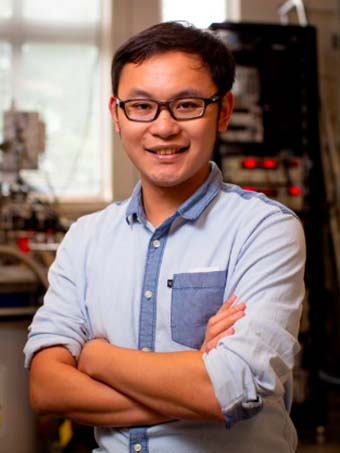
Email: wishuang@nus.edu.sg
Office: S16-08-12
Current Research
Over the past half-century, the semiconductor chip process has matured significantly due to trillions of dollars in investments in equipment and R&D. Semiconductor-based qubits have garnered extensive interest for their compatibility with industrial processes, making them one of the most promising technical approaches for developing universal quantum computers and surpassing Moore’s Law. We work on quantum dot spin qubits in various semiconductor materials such as bilayer graphene, silicon, and planar germanium. There are two main focus areas of our research:
- Characterization and Modeling of Qubit Performance:
We have implemented high-fidelity two-qubit logic gates in silicon quantum dots with 99% fidelity (Nature 526 (7573), 410-414; Nature 569, 532–536; arXiv:2303.04090) and achieved a single-qubit gate fidelity of 99.96% (Nature Electronics 2, 151–158 (2019)). We focus on the detailed characterization of qubits to understand their behavior under different conditions, particularly the impact of non-local and non-Markovian noise. By characterizing noise in multi-qubit systems, we aim to distinguish between classical and quantum noise effects. We seek to determine if spatially correlated noise, rather than localized noise, limits the scalability of semiconductor qubits. Additionally, understanding correlated noise allows us to use its properties to entangle multiple qubits. - Hybrid Quantum Systems:
We pioneered spin qubit readout for bilayer graphene quantum dots, achieving a high signal-to-noise ratio of ~7 (PRX Quantum 3 (2), 020343), and achieved spin and valley readout using the Pauli blockade mechanism (Nature Physics 20 (3), 428-434). Additionally, fast charge readout is enabled by coupling quantum dots to high-impedance NbTiN resonators (Nano Lett 24, 7508–7514). We will investigate circuit QED for fast quantum non-demolition readout, probing noise, and achieving long-range, high-fidelity coupling between semiconductor spin qubits. This involves coupling multiple spin qubits to a single cavity to analyze spatial correlations and improve readout speeds, essential for error correction within coherence times.
Selected Publications
- Rebekka Garreis, Chuyao Tong, Jocelyn Terle, Max Josef Ruckriegel, Jonas Daniel Gerber, Lisa Maria Gächter, Kenji Watanabe, Takashi Taniguchi, Thomas Ihn, Klaus Ensslin, Wei Wister Huang, “Long-lived valley states in bilayer graphene quantum dots”, Nature Physics 20, 428–434 (2024).
- Lisa Maria Gächter, Rebekka Garreis, Jonas Daniel Gerber, Max Josef Ruckriegel, Chuyao Tong, Benedikt Kratochwil, Folkert Kornelis de Vries, Annika Kurzmann, Kenji Watanabe, Takashi Taniguchi, Thomas Ihn, Klaus Ensslin, Wister Wei Huang, “Single-shot spin readout in graphene quantum dots”, PRX Quantum 3 (2), 020343 (2022).
- B. Hensen, W. Huang (equal contribution), C.H. Yang, K. W. Chan, J. Yoneda, T. Tanttu, F. E. Hudson, A. Laucht, K. M. Itoh, A. Morello, A. S. Dzurak, “A silicon quantum-dot-coupled nuclear spin qubit”, Nature Nanotechnology 15, 13–17(2020).
- C. H. Yang, R. C. C. Leon, J. C. C. Hwang, A. Saraiva, T. Tanttu, W. Huang, J. C. Lemyre, K. W. Chan, K. Y. Tan, F. E. Hudson, K. M. Itoh, A. Morello, M. Pioro-Ladrière, A. Laucht & A. S. Dzurak, “Silicon quantum processor unit cell operation above one Kelvin”, Nature 580, 350-354 (2020).
- W. Huang, C. H. Yang, K. W. Chan, T. Tanttu, B. Hensen, R. C. C. Leon, M. A. Fogarty, J. C. C. Hwang, F. E. Hudson, K. M. Itoh, A. Morello, A. Laucht, and A. S. Dzurak, “Fidelity benchmarks for two-qubit gates in silicon”, Nature 569, 532-536 (2019).
- M. Veldhorst, C. H. Yang, J. C. C. Hwang, W. Huang, J. P. Dehollain, J. T. Muhonen, S. Simmons, A. Laucht, F. E. Hudson, K. M. Itoh, A. Morello & A. S. Dzurak, “A two-qubit logic gate in silicon”, Nature 526, 410 (2015).
Affiliations & Links
- Assistant Professor at Department of Materials Science and Engineering, NUS
- Google Scholar
